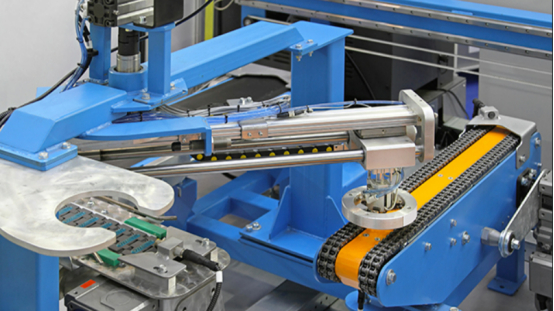What is the main purpose of the "non-standard automation" design work?
1. Generally, automation parts such as electric slides, cylinders, various motors (such as stepper motors or servo motors) and other drive units are used, and sensing components (such as sensors for various purposes), as well as electric turntables, belts Conveyors, handling manipulators and other mechanical devices for conveying materials are equipped with executive components such as grippers, vacuum suction cups, and push rods, and are supplemented by flexible program automatic control units to replace the corresponding manual or mechanical actions in the original production process. , increase production capacity;
2. By improving the accuracy of mechanical movement and movement rhythm, it replaces the original production process and improves the quality;
3. Mainly by reducing the labor in the process, reducing labor intensity and reducing production costs.
Many friends in the preliminary design stage, it is easy to ignore these three main purposes, and finally often lead to the overall scrapping of the equipment that has been designed and produced. have serious consequences.
What is the main work of the "non-standard automation" design work?
1. Gather information: Get a detailed understanding of all the specific details of the original process, production process or production equipment, as well as existing production capacity, labor quantity, how many processes currently exist, process quality (or product quality), raw and auxiliary materials, etc. It is best to go to the production line to conduct multi-level inquiries, surveys and understandings with the competent engineers and operating staff, and to understand the environmental requirements in the workplace and whether there are any special requirements;
2. Understand the demand: understand the main purpose and requirements to be achieved from the customer's supervisor;
3. Plan confirmation: According to the above two basic conditions, combined with the optional conditions, a preliminary feasible plan is proposed for the team to discuss collectively, and then delivered to the customer for confirmation;
4. Selection of main components: After the feasibility plan is confirmed by the customer, start the selection of automatic parts; (generally, when making a feasible plan, preliminary selection actions are also required)
5. Parameter verification: According to the customer's requirements for production capacity (generally refers to the time required for the entire cycle process), carry out the process step design of the whole process, and check and confirm the functions of the initially selected automation parts;
6. Conventional design: After the above work is completed, the design work of the general drawing sketch of the assembly can be carried out, and the conventional mechanical design workflow can be entered. At the same time, electrical engineers and programmers will design and compile electrical schematic diagrams and program control software according to the overall implementation plan and process flow chart;
7. Audit and customer confirmation: After completing the mechanical design, external procurement of automation components, machining parts, electrical diagrams and program control diagrams, after a standardized review and customer reconfirmation, the manufacturing, assembly, and debugging work can be completed. Then enter the trial operation stage;
8. On-site debugging: through trial operation and testing, after the design requirements can be met and customer requirements can be realized, the installation and debugging stage can be carried out on the customer's site. until the entire project is completed.
